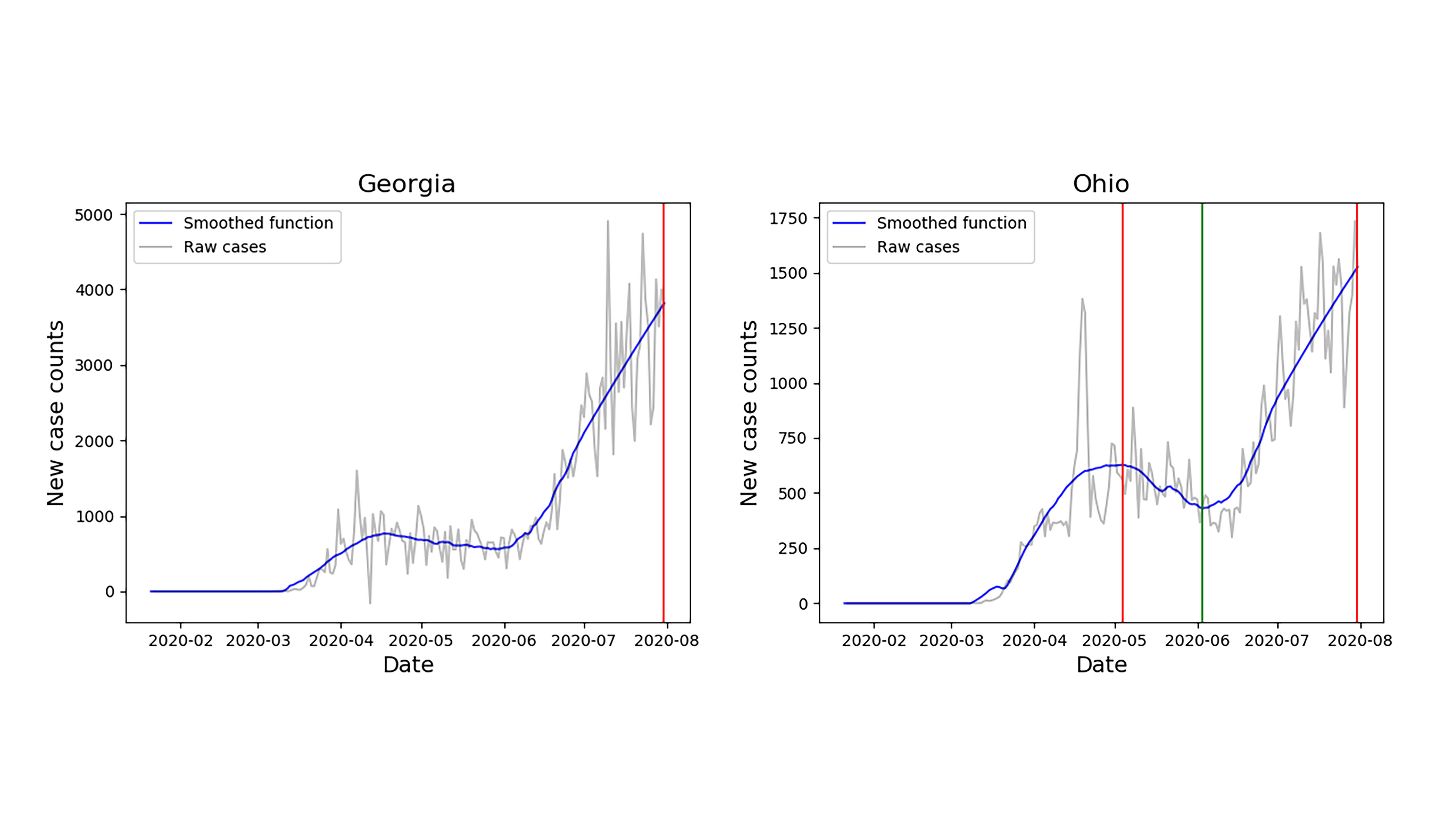In the journal Chaos, by AIP Publishing, mathematicians report a method to analyze COVID-19 case numbers for evidence of a first or second wave. The authors studied data from all 50 U.S. states plus the District of Columbia for the seven-month period from Jan. 21 to July 31, 2020. They found 31 states and D.C. were experiencing a second wave as of the end of July.
Their method smooths raw daily case count data to eliminate artificially low counts over weekends and even some negative numbers that occur when localities correct errors. After smoothing the data, a numerical technique is used to find peaks, P, and troughs, T. From this, turning points can be identified.
A turning point occurs when a falling curve surges upward or a rising curve turns downward. Only those sequences where the peak and trough amplitudes differ by a certain minimum amount are counted. A second wave that’s less than one-fifth the size of the first doesn’t qualify as a “second wave” — it’s just too small. Fluctuations can occur when a curve flattens for a while but continues to increase without going through a true downturn, so the method eliminates these false counts.
Thirteen states, including Georgia, California, and Texas, had increasing case numbers throughout the entire seven-month period. These states are considered to be still in their first wave. Thirty-one other states, including Florida and Ohio, exhibit sequences of the form TPTP — zero cases to a first peak, then another trough and peak. This is the signature of a second wave.
New York and New Jersey completely flattened their curves by the end of July. The analysis confirms these two states experienced just one wave.
The investigators also carried out a month-by-month deeper investigation and grouped the states into clusters according to how their case numbers changed over time. The states in a cluster have similar dynamic profiles, but the cluster membership varies as the epidemic spreads.
“Similarities within clusters can help identify common characteristics of the states that have most and least successfully managed COVID-19,” said author Nick James. “After an early first surge, Florida reduced restrictions and has since experienced a long and steep second surge,” he said. This contrasts with New York and New Jersey, who kept restrictions in place and have, so far, avoided a second wave.
“The real moral of this paper is that COVID-19 is highly infectious and very difficult to control,” said author Max Menzies.
Menzies said their analysis shows governments should never allow new cases to increase, nor reduce restrictions when case numbers have merely flattened.
“A true turning point, where new cases are legitimately in downturn and not just exhibiting stable fluctuations, should be observed before relaxing any restrictions.”
The authors have also applied their method to Brazil, which has a statelike structure, and found similar results.
###
The article, “COVID-19 in the United States: Trajectories and second surge behavior,” is authored by Nick James and Max Menzies. The article will appear in Chaos on Sept. 22, 2020 (DOI: 10.1063/5.0024204). After that date, it can be accessed at https://aip.scitation.org/doi/10.1063/5.0024204.
ABOUT THE JOURNAL
Chaos is devoted to increasing the understanding of nonlinear phenomena in all areas of science and engineering and describing their manifestations in a manner comprehensible to researchers from a broad spectrum of disciplines. See https://aip.scitation.org/journal/cha.
###


